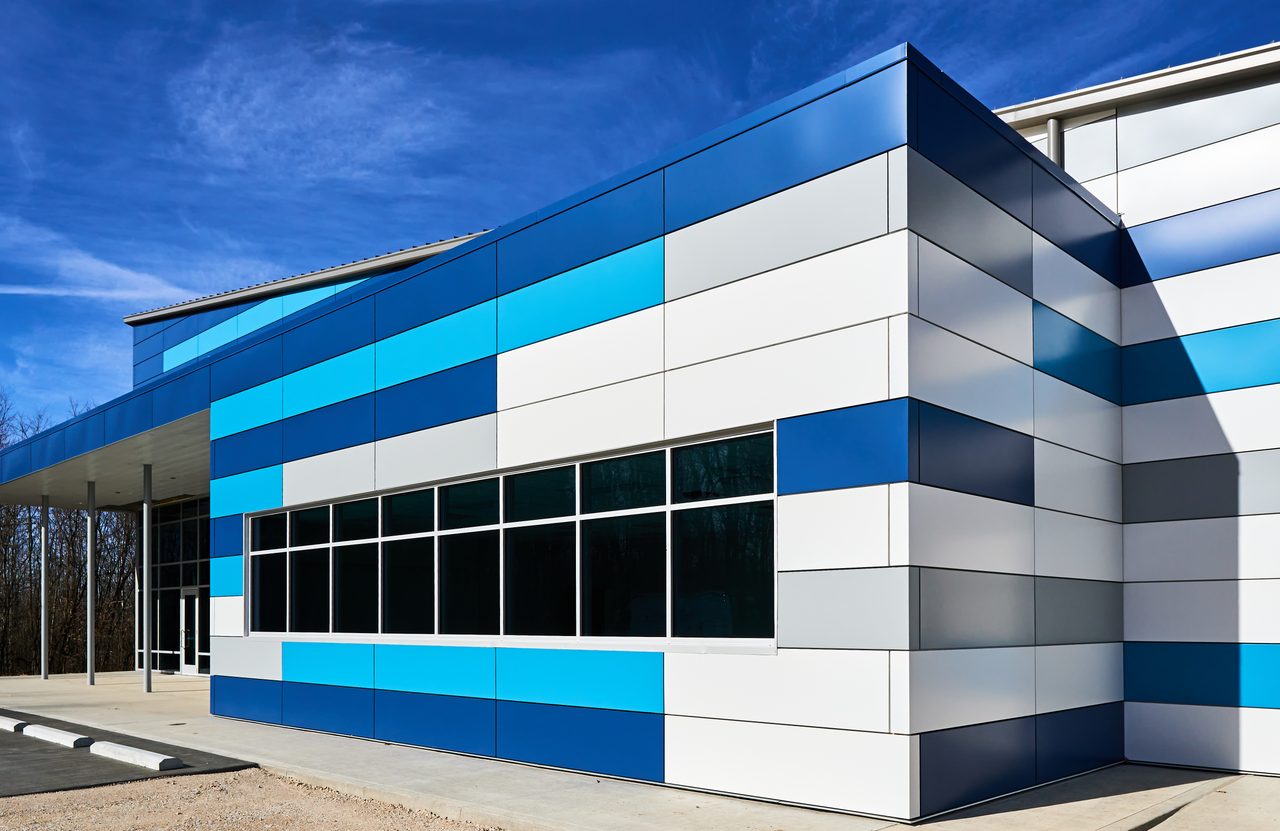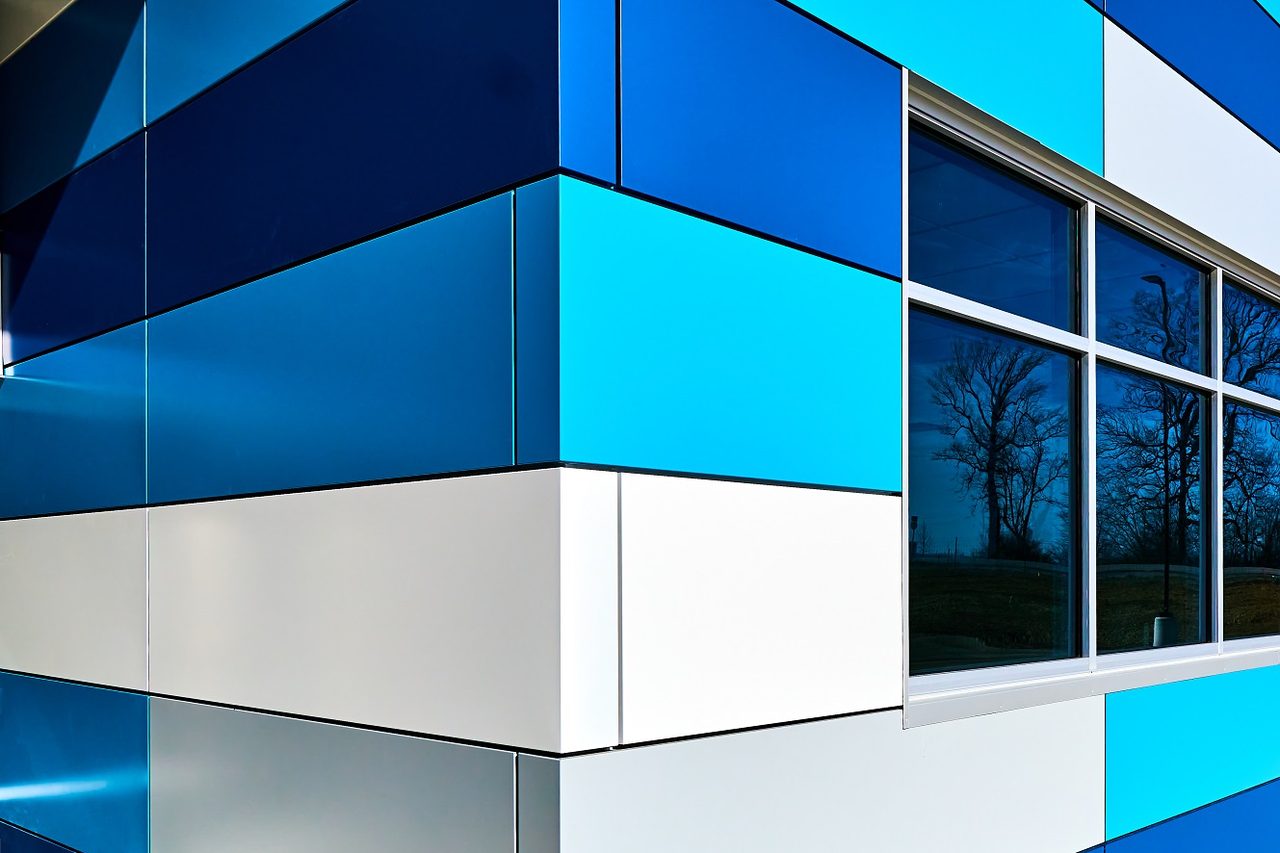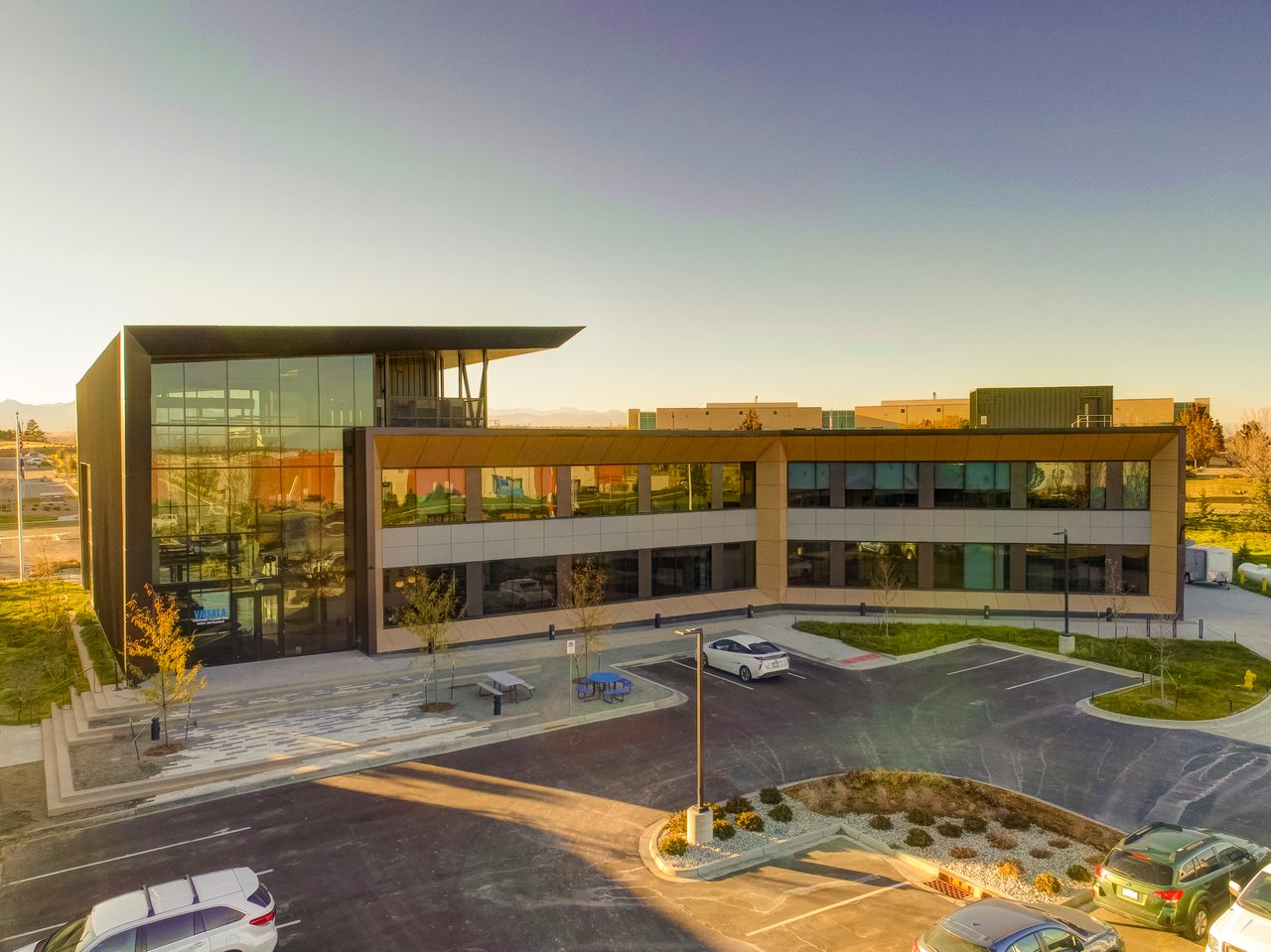Coating Considerations for Architectural Aluminum
Design professionals should consider the importance of specifying colorful coatings with appropriate performance, longevity and sustainability
By Tammy Schroeder
More than 80 percent of the information processed by the human brain is visual. Color helps with focus, orientation, recognition and recall. Color is one of the top features people notice, and react to, when they look at a building, a room or an object. Design and building professionals carefully consider not only the correct hue, but also understand the importance of specifying colorful coatings with appropriate performance, longevity and sustainability.
Defining and distinguishing a building envelope’s form, finished architectural aluminum can be seen in numerous product applications. These include façade and wall panel systems, canopies and sun shades, soffits and trim, entry and garage doors, and framing members of curtainwall, storefront, window and entrance systems.
Prior to receiving their colorful coatings and finishes, the aluminum material may be supplied as flat sheets or as extruded profiles in linear, angled and curved shapes. Factory-applied, durable finishes maintain the manufactured products’ intended look and specified performance with minimal maintenance. Finishes that offer a unique appearance, texture or weathering performance provide manufacturers with a strategic advantage in appealing to building owners and design professionals who want their buildings to make an enduring, architectural statement.
For exterior applications with architectural-grade high performance, there are two main finishing types for aluminum products: 70 percent polyvinylidene fluoride (PVDF) resin-based painted coatings and anodize finishes.
Photos by Richard Chisum, Chisum Multimedia; courtesy of John W. McDougall Company, Inc.


The new Elmer Buchta Entrepreneurship & Technology Center (EBETC) in Pike County, Indiana, features a cheerful multi-colored exterior designed by Hafer. The metal rainscreen wall panel system manufactured John W. McDougall Company Inc. was finished by Linetec using four different colors: Bone White, Cityscape Gray, a darker Regal Blue and a lighter Siam Blue. Two 70 percent PVDF-resin based architectural coating systems were applied under factory-controlled conditions Duranar® by PPG for the white, and Fluropon® by Sherwin-Williams for the gray and blues. All 629 panels were installed by Midwest Roofing-Sheet Metal in coordination with general contractor Jasper Lumber Co., Inc.
Sparkle, Shimmer and Shine
For an eye-catching, dynamic finish choice, architectural aluminum systems painted with mica and metallic coatings bring sparkle, shimmer and shine to practically any color. The reflective quality of these specialty coatings appears to change throughout the day and the seasons.
The light reflectance of the aluminum flakes within the mica and metallic coating gives the finish its lively appearance. The size and reflectivity of the flakes in the coating, their orientation and the degree to which they are all oriented in the paint coating will affect the brightness of the color. Typically, darker colors do not provide as much sparkle and bling as the lighter colors. Be aware that bright, semi-transparent colors, such as silver metallics, also tend to present the greatest potential for variation.
A full-service, single-source finishing provider can provide building envelope system manufacturers with the most effective options to reduce visible variation, especially when applying these coatings on large surfaces like a metal panel system.
Emphasizing Elemental Elegance
Until recently, the color palette for architectural anodize finishes has been very limited. Anodize finishes emphasize the natural metallic look of aluminum. Expanding beyond clear, bronze and champagne, at least one finishing service provider has developed two tawny tones to widen this color range—Copper Anodize and Bordeaux Anodize.
When true copper is impractical, Copper Anodize finish on aluminum can present an economical simulation. Unlike real copper, the anodize will not patina. It retains its elemental metallic look, exceptional hardness and long-lasting durability.
Building on the success of Copper Anodize, the newest color innovation is Bordeaux Anodize. This brings a rich, burgundy color to the anodize spectrum. Both Copper Anodize and Bordeaux Anodize provide the versatility to meet either a contemporary or historic aesthetic, while delivering industry-leading performance, without any concern of copper run-off stains on the building envelope.
Tactile, Textured and Timely
Adding fine aggregate to high-performance PVDF resin-based architectural coatings creates a tactile quality. Terra cotta painted colors gain authenticity with a gritty stone-like feel. Mimicking the look and feel of true terra cotta, these specialty textured coatings for aluminum offer a more economical option.
Spattercoat finishing offers similar benefits for projects seeking the availability and durability advantages of aluminum with the appearance of marble, stone, brick or other materials. Customized to the project’s individual criteria, the specialty finishing process begins by first painting the entire exposed aluminum surface with the specified PVDF resin-based undercoat color. On top of this, additional colors of paint are layered using a spattered technique. The paint spatters can be many or few, large or small, thick or thin to produce the desired three-dimensional, textured effect.
Finished aluminum products also are lighter weight than real stone, which also makes them easier to install. These building products can come in a large variety of shapes and sizes, and be delivered in a short lead time.
Custom Creations
When one of the 50,000 colors or available specialty finishes still do not quite fit the project’s requirements, finishers with an in-house blending laboratory can scan samples of anything from a piece of metal to a swatch of fabric, and then formulate the recipe of tints and bases to create a match. Paint coatings can align with an organizational logo, school colors, team uniforms or company brand.
Finishing service providers with computer-controlled mix and match color systems and quality assurance processes may be approved partners with high-performance paint manufacturers. These systems, processes and partnerships not only achieve a precisely verified color match, but do so with confidence that the color will be consistent and meet the paint specification for the project’s requirements.




